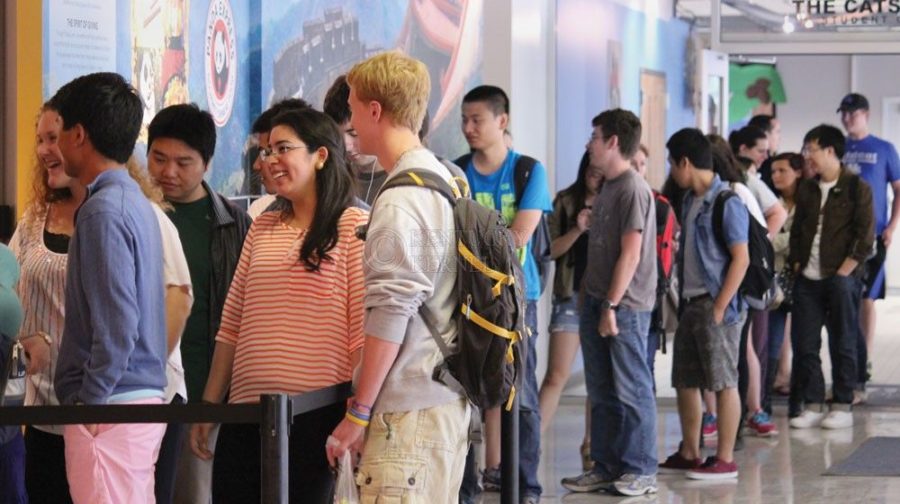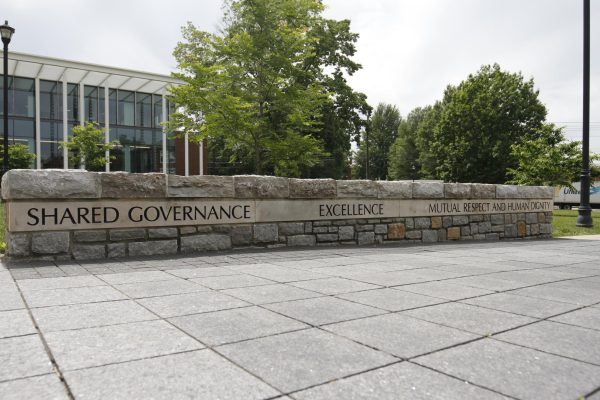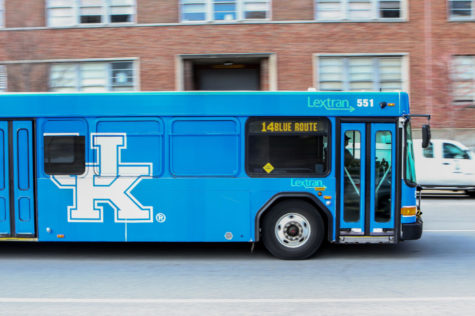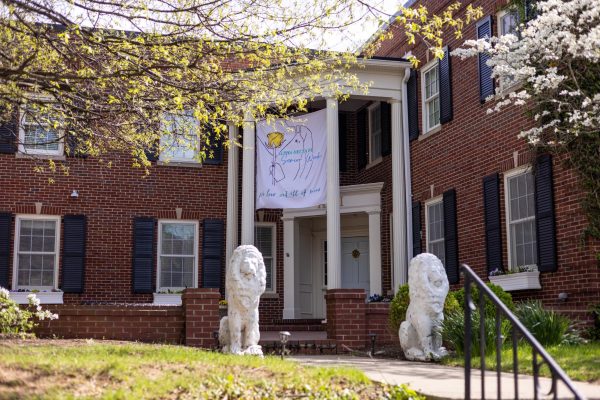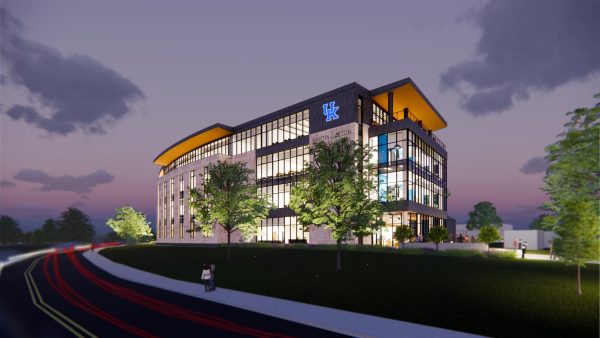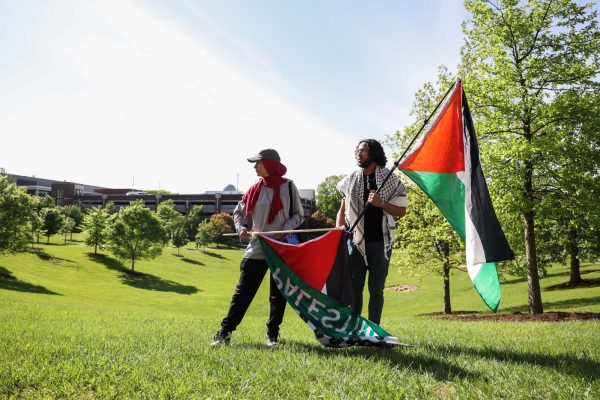Future of Student Center continues to be explored
September 26, 2013
By Will Wright | Assistant News Editor
As campus continues to change and evolve, the Student Center is keeping pace by trying to match the needs of students.
“A Student Center is much more than a brick and mortar building,” said John Herbst, director of the Student Center.
It’s continually changing with the students’ needs, he said.
Increasing numbers in attendance of the Cats Den, Late Night Film Series and room reservations highlight the changing student needs, and the need to accommodate those changing priorities.
“I think it’s critical to campus life,” Herbst said.
Between classes, lines that sometimes reach all the way from Chick-fil-A to the back wall of the food court in the Student Center are not necessarily a bad thing, Herbst said.
“If you have a good dining operation, there will always be lines,” he said.
Herbst is convinced that even if we had five times the amount of dining there would still be lines.
He wants to be sure UK looks at the way students are eating, considering there are vegetarian, gluten free and other diets that are popular among today’s youth.
“If you’re providing students with what they want, you’ll be successful,” he said.
A survey will be sent out this semester to all UK students with the hope of gaining insight into student needs, wants and concerns.
“Our students really deserve the best, and unfortunately with an aging building, we aren’t providing the best service we could,” Herbst said.
Right now, there is a shift among universities across the country to renovate, expand or completely rebuild student center facilities.
North Carolina State has a project underway, Ohio State opened an nearly-$120 million center three years ago and the University of Arizona opened a student center of more than 400,000 square feet, Herbst said.
In comparison, the UK Student Center takes up about 220,000 square feet.
Some universities have multiple student centers, and this is something to be considered in this project, Herbst said.
The Student Center is in an excellent location for serving north campus, “but it’s obvious that there might be a need for a satellite facility to serve south campus,” he said.
Even with that, Herbst said there would be a need to expand and renovate the current facility to accommodate student needs.
For example, it can be difficult to reserve a room in the Student Center, especially if you’re trying to reserve the Grand Ballroom or another large room, he said.
If there is a new Student Center, there would be more meeting rooms with a concentration on larger rooms, Herbst said.
In 1982, the addition that added the bookstore and Worsham Theatre was constructed. This was the last major addition to the building, he said.
However, there have been major renovations since that addition.
About two years ago, renovating the Student Center roof cost $300,000.
Repairs to the skywalk that connects the food court to the addition with the bookstore and Worsham Theatre cost $20,000.
Routine maintenance and repair, which Herbst defined as any repair costing less than $10,000, cost UK $179,553 in the last fiscal year.
The year before that, $146,729 was spent on routine maintenance.
“That’s probably a trend,” Herbst said, referring to the increasing maintenance cost.
As the building ages, repairs become more costly.
For example, the elevators in the Student Center cost $5,019 to repair two years ago, but they cost $10,635 to repair last year.
The building brings about $4.5 to $5 million in revenue through fees that students pay along with tuition, through leasing space and through organizations including the Cats Den and University Sound and Lights.
A portion of this revenue would be used to create a new Student Center, but additional revenue would have to be created as well, Herbst said.
There are different possibilities in how to go about creating a new Student Center including tearing it down all at once, renovating the current building or tearing it down in sections, Herbst said.
The University of Arizona tore down one section of their Student Center, but left another section open, Herbst said.
Other universities have torn it down all at once, then put up temporary facilities to replace it.
“The most economical is just to do it all at once,” Herbst said.
Some of the temporary buildings other universities have used cost up to $2 million, but it still turns out to be the most cost-efficient way, he said.
“I suspect we would visit other universities to see how other campuses are doing it,” Herbst said. “Our mission is to become a bustling, thriving community for student life.”









































































































































